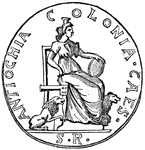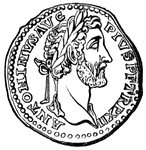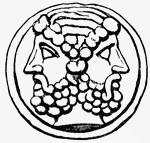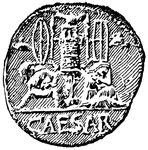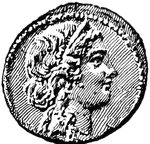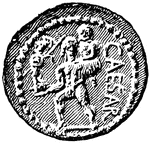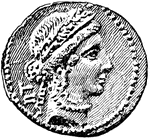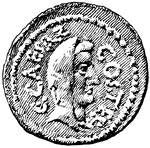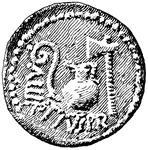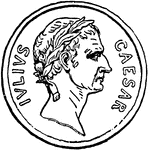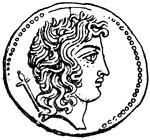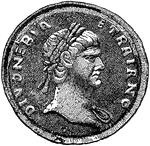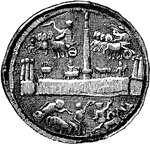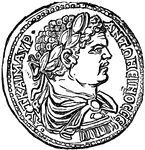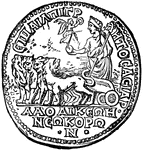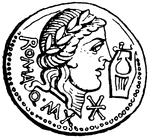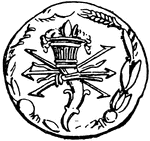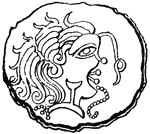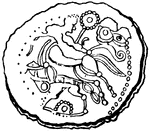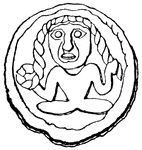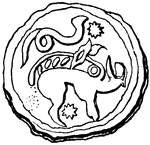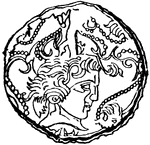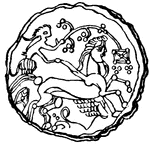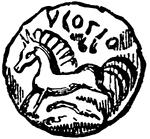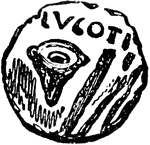This ClipArt gallery offers 97 images of ancient Roman coins. These coins range throughout the duration of the Roman Empire.

Antioch
This medal bears an emblem of Antioch with the inscription "Antiocheon Metro. Kolon.", which suggests…

Aradus
This medal shows that the people of Aradus venerated the sun, and were proud of the products of their…
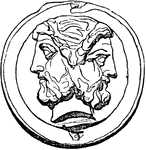
As
"The unit of value in the Roman and old Italian coinages, was made of copper, or of the mixed metal…
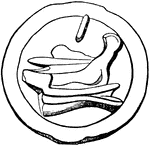
As
"The unit of value in the Roman and old Italian coinages, was made of copper, or of the mixed metal…
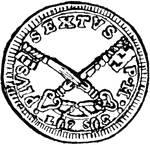
Baiocco
A small coin of the former Papal States, struck in both silver and copper, worth about a cent.
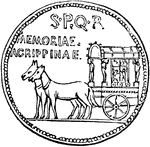
Carpentum
"A cart; also a two-wheeled carriage enclosed, and with an arched or sloping cover overhead. The carpentum…
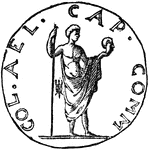
Coin of Hostilianus
A coin of Hostilianus, with a figure standing with a blunt spear in his right hand and a human head…

Corona
"A crown, that is, a circular ornament of metal, leaves, or flowers, worn by the ancients round the…
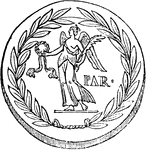
Corona
"A crown, that is, a circular ornament of metal, leaves, or flowers, worn by the ancients round the…
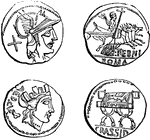
Denarius
"The principal silver coin among the Romans, was so called because it was originally equal to ten asses;…

Denarius
"Denarius of the earliest kind: Having on the obverse a personification of Rome as a warrior with helmet;…

Denarius of Marcellus
The obverse and reverse sides of the Denarius, a Roman coin. The coin depicts Gaius Claudius Marcellus…

Dieties
A coin engraved with images of Minerva and Jupiter. Minerva was the Roman equivalent to the Greek goddess…
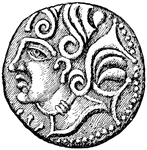
Coin of Diviciacus
The Coin of the King of the Suessiones, Diviciacus, with bust on front and prancing horse on back. Front.
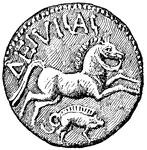
Coin of Diviciacus
The Coin of the King of the Suessiones, Diviciacus, with bust on front and prancing horse on back. Back.
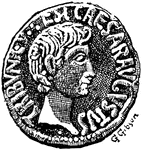
Dupondius, Obverse
The obverse side of the dupondius, "a Roman bronze coin, of the value of 2 asses." -Whitney, 1911
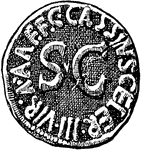
Dupondius, Revers
The reverse side of the dupondius, "a Roman bronze coin, of the value of 2 asses." -Whitney, 1911
